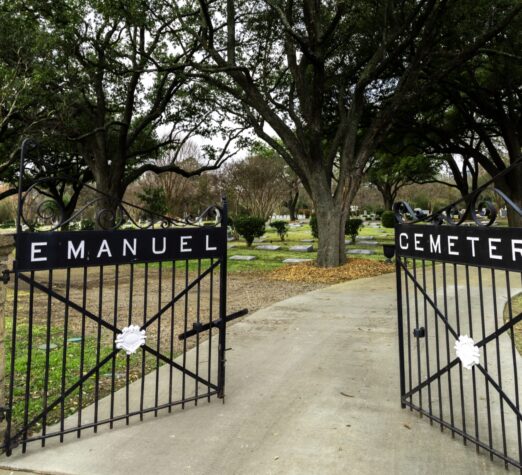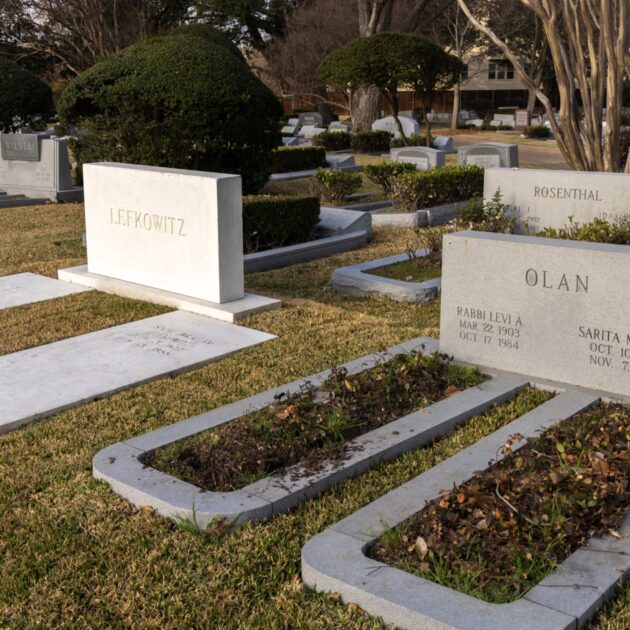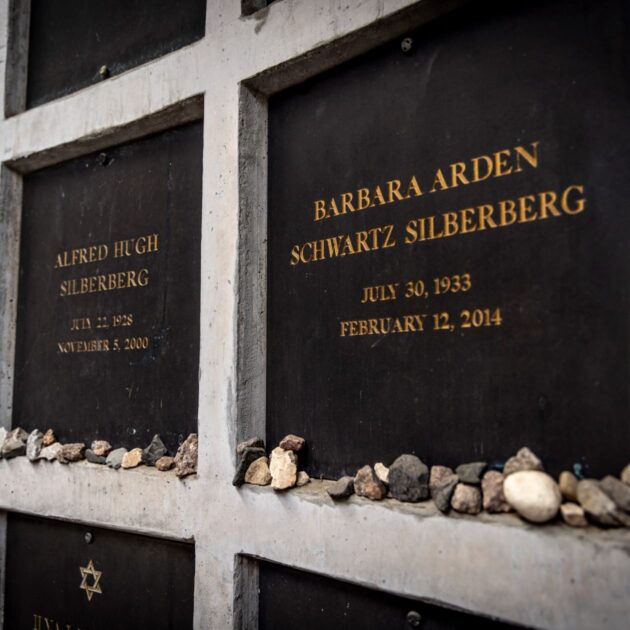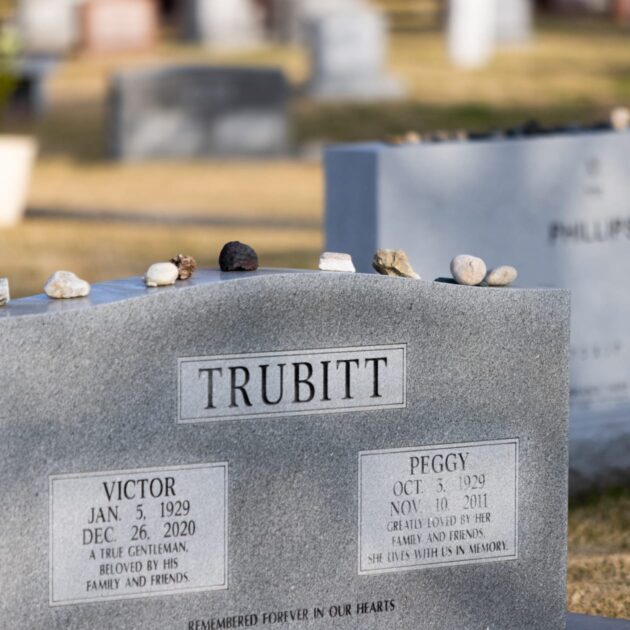Cemetery and Mausoleum
FROM GENERATION TO GENERATION, A TRADITION OF CARING.
“Cemeteries tell more stories than any anthology ever could. They offer gray stone and green earth, history and community, whispers of grief and of peace. Now I know some of us are cemetery people and some of us are not, but when I walk through the Temple Emanu-El Cemetery or the cemeteries where my loved ones are buried in New York and Boston, remembered personalities perch on my shoulder; along with whatever sadness may come, I feel a sense of belonging and gratitude. Cemeteries, familiar or foreigh, give me a sense of my place in the world, in the constellation of lives that somehow still shine on my own.” –Rabbi David Stern, Yizkor 2023
Find the grave of a loved one who is buried at the Temple Emanu-El Cemetery here.


AT A GLANCE
The Temple Emanu-El Cemetery and Mausoleum was established at its present site in 1956, and today joins Greenwood Cemetery, Freedman’s Cemetery and Calvary Cemetery as one of four historic cemeteries in Uptown, Dallas, just west of North Central Expressway. The beginnings of Temple Emanu-El date back to 1872, when a young Jewish man died in June of that year. Eleven men formed the Hebrew Benevolent Society to bury the deceased, and members of this Society established Temple Emanu-El in 1875. The 11-1/2 acre cemetery, on a tranquil, shady site now in the midst of the vibrant city that Dallas has become, contains the graves of generations of “early families and newcomers, of merchants and physicians, lawyers and teachers, rabbis and writers, architects, engineers, social workers and musicians,” according to the historic marker at the cemetery.
VISITING THE CEMETERY
Leaving of Stones
It is customary to leave stones at the gravesite. This is an ancient Jewish custom expressing the permanence of our memories of our loved ones. The Temple Emanu-El Cemetery provides stones for this purpose.


HEADSTONE
The headstone can include the English and Hebrew name of your loved one, as well as the dates of birth and death in English and Hebrew. Some may choose to include the Hebrew letters pei and nun, standing for “here is buried” and tav, nun, tzadi, bet and hei standing for the phrase “May his/her soul be bound up in the bond of eternal life.”
At Yahrzeit and the High Holy Days
It is traditional to visit the graves of those who have passed at the season of yahrzeit and during the Days of Awe. Temple hosts a yearly service of Kever Avot on the Sunday between Rosh Hashanah and Yom Kippur, and all are welcome, no matter where your loved ones are buried
CONTACT US
For information on space availability, pricing, tours of the Temple Cemetery and Mausoleum, Jewish traditions and pre-need planning, contact:
Jeff Friedman, Director of Cemetery Operations
214-706-0000, ext. 1601
Temple Emanu-El Cemetery
3501 Campbell St., Dallas, TX 75204
(Lemmon Ave. at Howell St.)
Hours of Operation
Open from dawn until dusk
